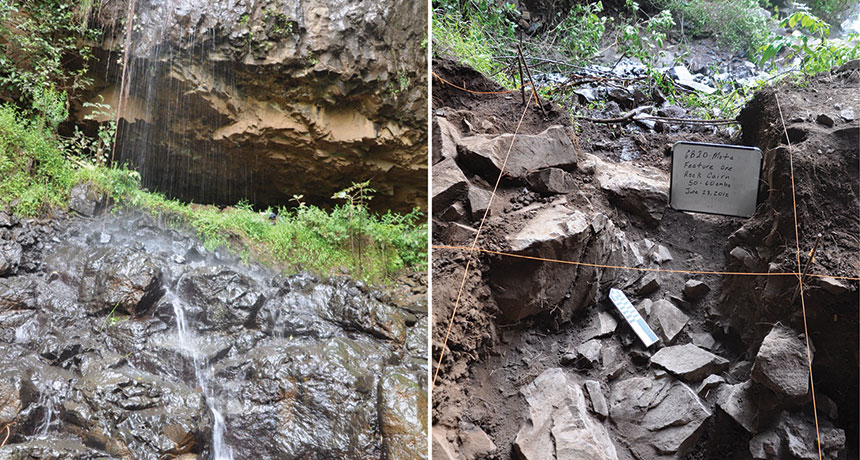
HOME SWEET GENOME A 4,500-year-old man’s skeleton found in Ethiopia’s Mota Cave has yielded the first ancient human genome from Africa. Rocks placed over the man’s burial were cleared away before excavating the skeleton.
Both: Kathryn and John Arthur